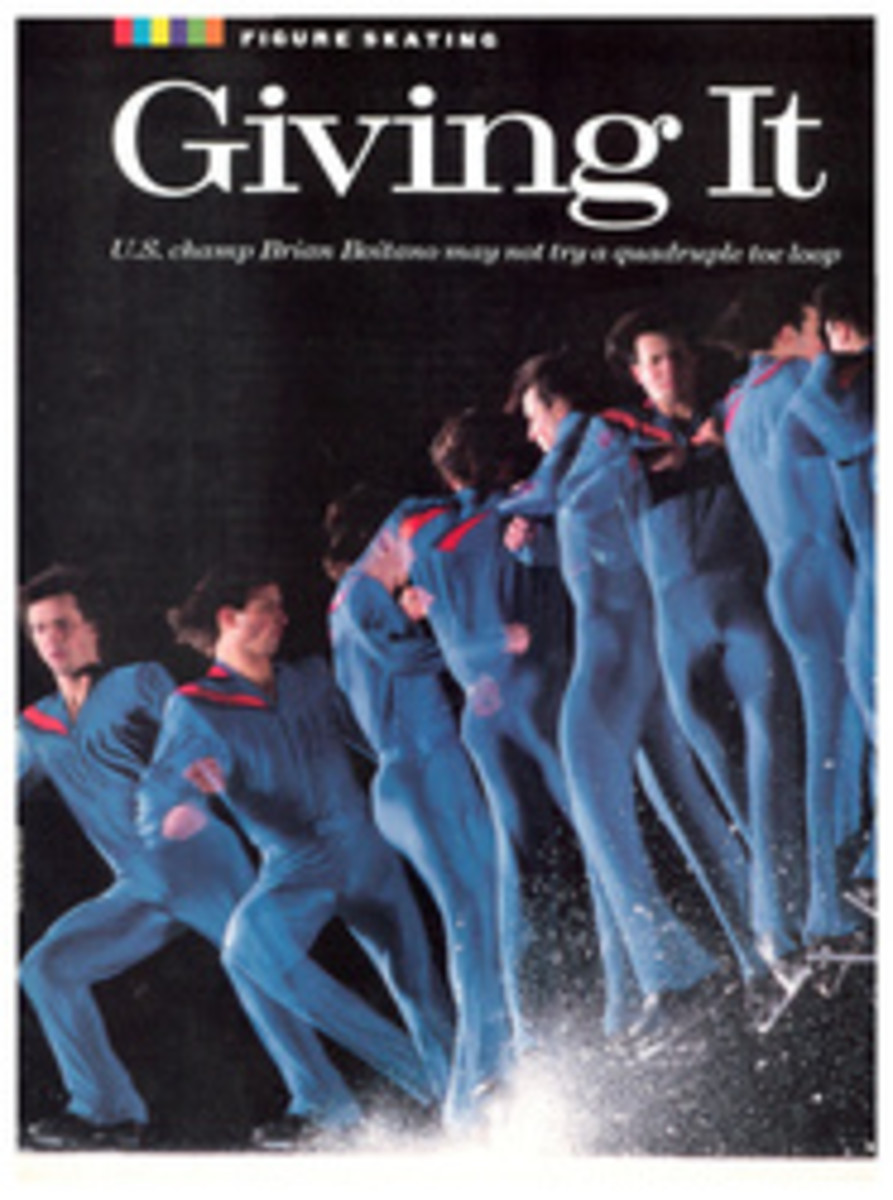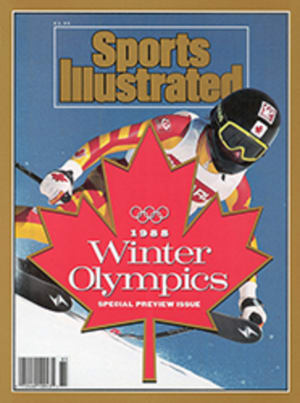
Reflections Of a Queen
Just where Michigan Avenue in Chicago becomes Lake Shore Drive, on a residential block that strikes one as a pleasant anachronism among the towers of the near North Side, there is a row of turn-of-the-century brick houses. At one a small woman in her late 50's answers the door. Her white-blonde hair is drawn back from her face in a bun. her back is as straight as a plebe's, and her blue eyes, which sportswriters of the late 1940s usually mentioned in their stories about her, are wide, warm and ready to be amused.
Barbara Ann Scott, now Mrs. Thomas V. King, was the Katarina Witt of 1947 and '48. Twice world figure skating champion and twice the European champion, she won the gold medal at the 1948 Winter Games in St. Moritz, to become Canada's first Winter Olympic individual champion. To veteran figure skating observers she was the long-awaited successor to Norway's fabled three-time Olympic gold medalist (1928, '32, '36) Sonja Henie.
As a skater, Scott resembled Henie in two respects: She thrived on competition—the tougher the better—and she was master of the compulsory figures, those meticulous tracings of circles, loops and brackets, which in her day counted for 60% of a competitor's total score. (Today school figures are down to 30% of the total.)
Figures were the reason Scott practiced eight hours a day for 12 years. There were 70 of them, all combinations of and variations on the figure eight. In competition, skaters were required to perform six figures three times each, first on one foot, then on the other. "In my day," says Scott, "you often didn't know until the night before which six of the 70 figures you were going to have to do. You really had to know them all."
Scott's contemporaries at the Minto Skating Club in Ottawa, her hometown, once calculated that she skated 11 miles a day on figures alone. "I like detail," she says. "And I like everything to be neat and tidy and symmetrical. I enjoyed trying to get as near perfect a circle as possible. It just interested me." In competition Scott would typically build an insurmountable lead in the school figures, which would see her through the free skating, Throughout the 1947 and '48 international championships, however, she was unbeatable in free skating, too.
"She was delicate, precise, exact, meticulous—simply perfect," recalls Dick Button, the American who won Olympic gold medals in the men's division in 1948 and '52. "She did everything right, and there was nobody to challenge her who was better in one particular area, either compulsory figures or free skating. Everything was right, everything was perfect."
She was the daughter of Col. Clyde Scott, military secretary to Canada's minister for defense, and the goddaughter of Conservative Prime Minister (1930-35) R.B. Bennett. Although the Scotts were well connected in Ottawa's social and governmental circles, they were not wealthy. After Col. Scott died in 1941, his widow, Mary, and Barbara, then 13, lived on his $3,000-a-year government pension. In 1947, when international competition resumed following World War II, the expenses for Scott's first European tour, approximately $10,000, were met by a group of her late father's influential friends. One of them also gave her a beaver coat. "Going over [to Europe] that year we flew in a converted Lancaster bomber that had benches instead of seats," says Scott. "That coat was great; I could roll up in it and sleep."
When Scott arrived in Davos, Switzerland, for the European championships in January of 1947, she was the reigning Canadian and North American champion (she had defeated Gretchen Merrill of Boston for the latter title). However Merrill, who was the U.S. champion, attracted most of the attention during the weeks of practice that preceded the competition.
"They didn't realize that North American meant Canada and the United States," says Scott. "I had people come up to me and say, "What's it like to live in an ice house?' Ice house? Then I realized they thought I was an Eskimo." The memory makes Scott roar with laughter.
In the end it was Scott herself who set the record straight. When she won the European title, the crowds stood and chanted "Barbarelli, Barbarelli," and, two weeks later, at the world championships in Stockholm, where Scott huddled in her gift coat as temperatures dipped to-20° F and the program listed her as Barbara Annscott, eight of the nine judges awarded her first place. Ulrich Salchow, the Swedish skater who created the jump now named for him, said, "She combined her difficult program in an artistic way so that her stunts were mixed up in astonishing surprises, all executed in an easy style, as if she skated only to have a good time for herself."
When Scott returned to Ottawa in March 1947, schoolchildren were given half the day off, two bands led a 12-block parade up Sparks Street, and the mayor handed her the keys to a yellow Buick convertible. Two months later, at a humiliating ceremony in the showroom of an Ottawa Buick dealer, Scott gave the car back. Avery Brundage, the not-so-benevolent despot of the Olympic movement, had notified the International Olympic Committee that in his view Scott relinquished her amateur standing when she accepted the Buick. All Canada was outraged. A Toronto Globe and Mail columnist addressed an open letter to Scott that began, "We read in the public prints where some acorn named Avery Umbrage, who lives down in the Excited States, is trying to have you expelled from the amateur ranks...."
The Olympic year of 1948 saw Scott progress triumphantly through the European championships in Prague to the Winter Games in St. Moritz to the worlds in Davos—figure skating's grand slam. Her face was on the cover of TIME, and her wax likeness went on display at Madame Tussaud's in London. During the European championships the Prague newspapers published her picture 17 times in three days, which was nine more times than Rita Hayworth had been so honored when she visited the city a few weeks earlier.
Late in 1948 Scott turned professional. According to a friend, "For Barbara Ann, turning professional was like going astray." She had been a proper Ottawa debutante, given to hats, white gloves and pearls—"plain Jane," as she puts it—and suddenly she was onstage at New York's Roxy Theater doing five shows a day in plunging necklines and feather headdresses. "I always tried to put in a double loop or a double Salchow, which meant nothing to anybody but to me, but sometimes I'd hear somebody way up there going clap, clap, clap, and I'd think, Ooh, there's a skater, a friend." she says. There followed a 10,000-mile, 20-week tour of Canada with her own show, Skating Sensations of 1950, a guest stint with the Ice Capades, a Rudolph Friml operetta in London called Rose Marie on Ice, and, finally, star billing with Arthur Wirtz's Hollywood Ice Revue.
"Mr. Wirtz had the most wonderful show," says Scott. "If your costume was trimmed with mink, it was real mink. There was a cape made of foxtails that went from white at the top to midnight blue at the bottom that I wore just for entrances, and oh, it was so heavy. I remember one night the line boys picked me up, and they were turning around, and they had this big thing spread out all over them. The boy who was holding me up tripped on something, and I heard him say, 'Oh, oh, we're going!' All of a sudden the whole lot of us went right down under all those foxtails. Very glamorous."
Scott retired from show business in 1955, without regret, and married Tommy King, who had been a pro basketball player for the Detroit Falcons of the Basketball Association of America. At the time King was publicist for Wirtz's various sporting, entertainment and business ventures. "I took Bill Boyd—you know, Hopalong Cassidy—on a tour of baseball parks," says King. "We even played Yankee Stadium; had a six-ring circus. I was so proud of that. We opened to 65,000 people on a Thursday night."
For the past 30 years Scott's main interest, apart from husband and house, has been horses, saddlebreds that she and King have owned and shown in local and regional shows. Every day Scott drives from downtown Chicago to Morton Grove, a northwest suburb, to groom and exercise a mare named Lady. "I showed her for many years," says Scott. "But I've sort of retired her now. Getting up at six in the morning to stand all day in the sun and the dust and the heat lost some of its glamour."
Order and self-discipline, tempered by a sense of humor, have characterized Scott's life. They served her well through the physical and emotional rigors of world-class competition and later in the hurly-burly of life on the ice show circuit. Now they support her in active middle age. Her house has a small swimming pool in the basement equipped with a dancer's barre at which she exercises every day, even if that means getting into the pool at midnight.
Button, who remains a good friend, says, "I'm sure there have been some tough moments in her life, but she gives the impression of always being happy and in charge. A lot of it comes down to the picture one has of oneself. I'm sure the picture Barbara Ann has of herself has always been very clear."
PHOTO
DAVID WALBERG
AT A MIRROR REMINISCENT OF ICE SHOW DAYS: THE FORMER SKATER AND A FRIEND
PHOTO
HANS STEINER
SCOTT DAZZLED THE CROWDS IN '48 WITH HER STYLE AND PRECISION
PHOTO
REUTERS/BETTMAN NEWSPHOTOS
AFTER VICTORY AT ST. MORITZ, SCOTT SHOWED OFF THE OLYMPIC GOLD
PHOTO
DAVID WALBERG
TOMMY ARRANGED THIS DISPLAY OF HIS WIFE'S MANY SKATING AWARDS
PHOTO
DAVID WALBERG
PRACTICING WITH A PIPE, SCOTT REHEARSES FOR CALGARY TORCH-CARRYING DUTY
THREE ILLUSTRATIONS

